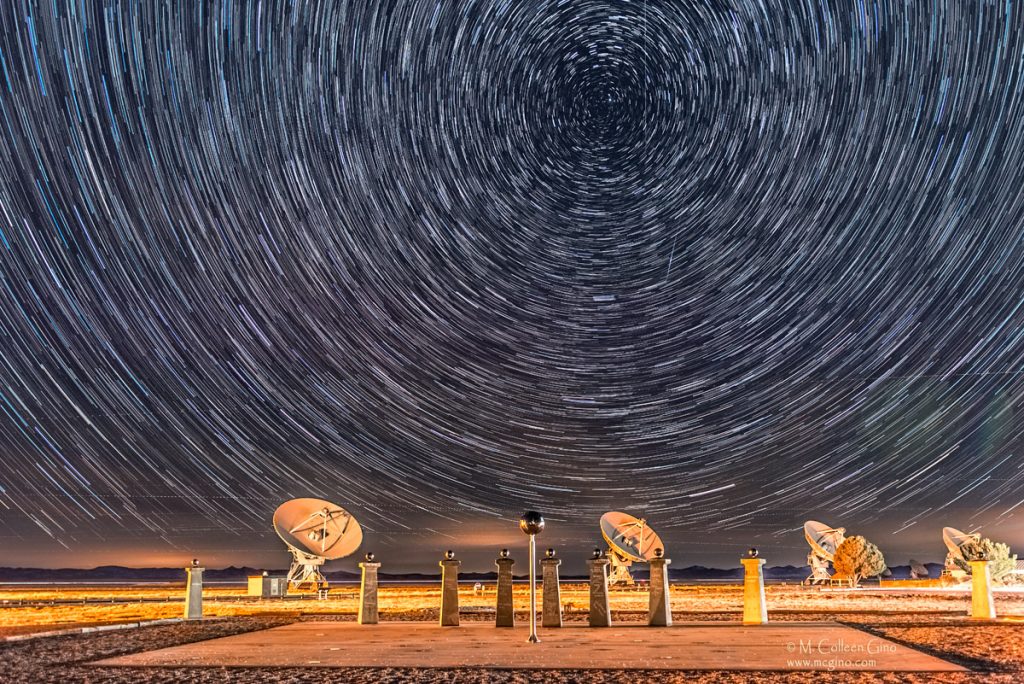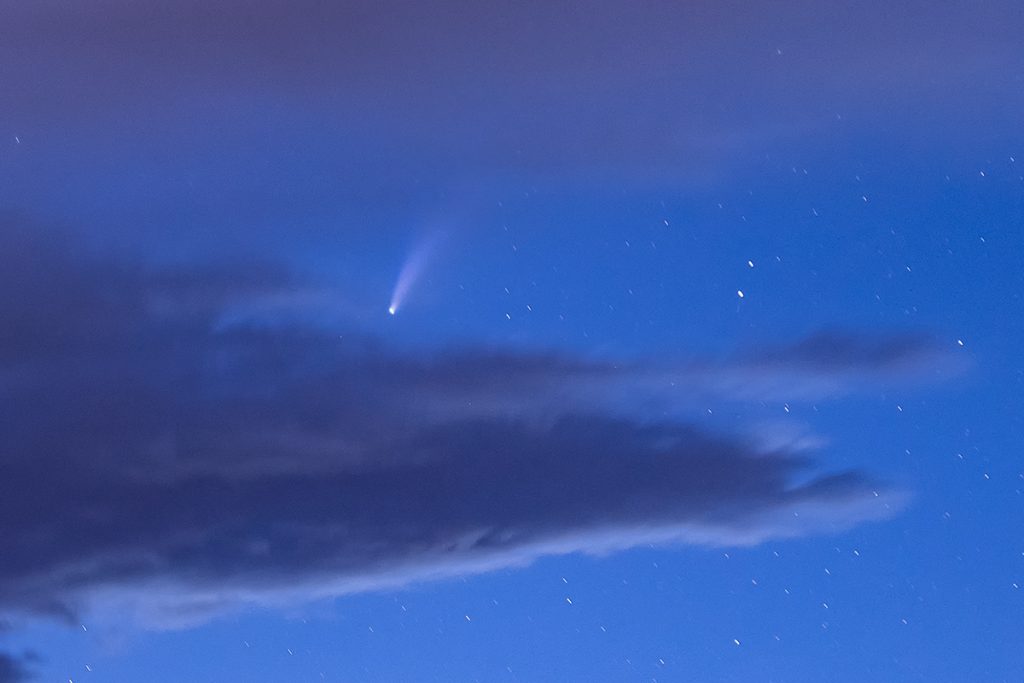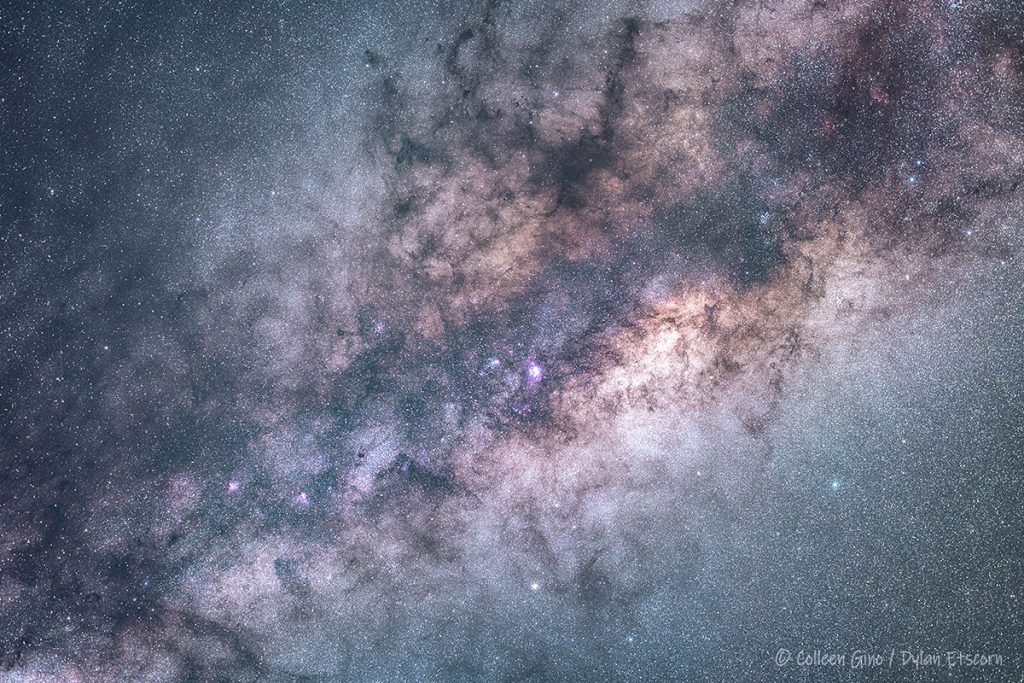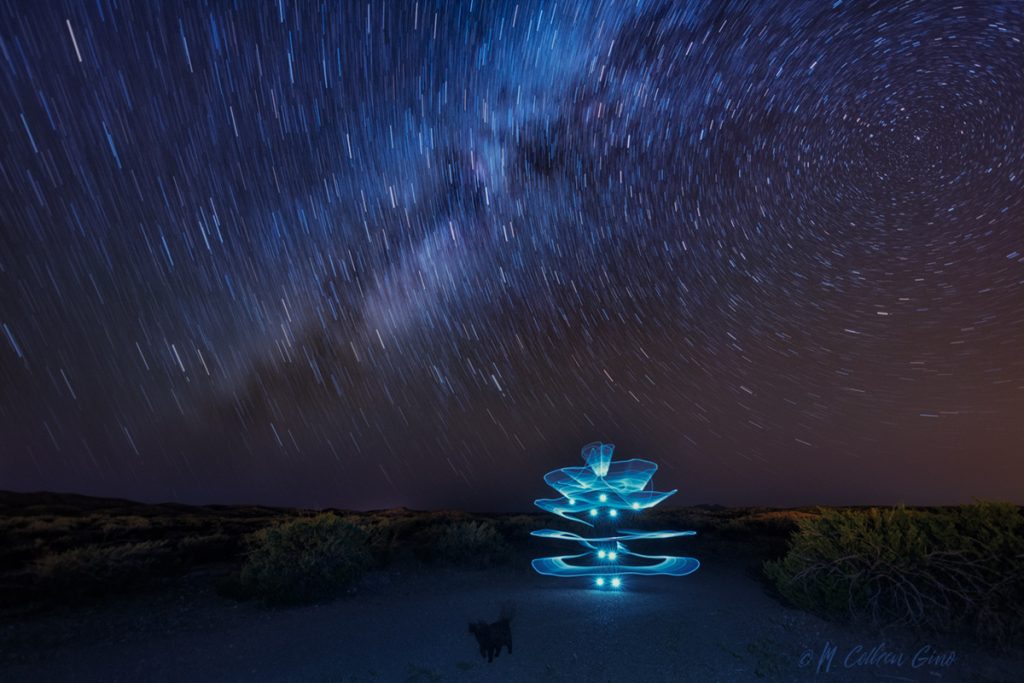While perusing the web yesterday, I came across an interesting astrophotography video tutorial about stacking hundreds of very short exposures to produce an image that is comparable to a single image with a much longer exposure time. The point was that while many people have a camera on which they can control the exposure length, and a tripod on which to mount the camera and keep it stable (perfect for relatively short exposures), not nearly as many people have some kind of tracking mount necessary for taking long exposure astrophotos. Personally, I’ve not had much success with this short exposure stacking method in the past; the resulting stacked image had nowhere near the detail of a single long exposure. But, it’s been a while since I tried it, so I figured it was time to give it another go!

First, a little background information for those not familiar with astrophotography. One of the primary challenges we face in photographing the night sky is getting an image without noticeable star trails. Unless our intention is to shoot star trails, as in the image above, we want to see nice, round, pinpoint stars in our image. This is not as easy as it sounds, because the Earth is rotating on its axis so the stars appear to move through the sky. This motion of the stars is not really noticeable when you’re just watching the sky, but it becomes very noticeable in a photograph taken with a camera on a fixed tripod. The longer the exposure time of the photograph, the more star trailing you get.

The way we account for this is by attaching the camera to a tracking mount, a device that rotates at the same rate as the Earth but in the opposite direction, resulting in stars that appear (mostly) motionless (and therefore points of light rather than streaks) in our camera’s field of view. If you don’t have such a device, the only way to achieve round stars is to limit your exposure time such that you don’t capture the apparent motion of the stars in your photograph.

Enter the astrophotography 500 rule, a simple formula for calculating the maximum exposure time for the focal length of the lens you’re using to get round stars. For full-frame cameras, you simply divide 500 by the focal length of your lens, and the resulting number is the approximate number of seconds you can expose without seeing elongated stars. (If you have a crop sensor in your camera, the formula is 500/lens focal length/1.5.) Note the word “approximate”; to get accurate results you must take much more into account, such as the pixel size of your sensor, the f-stop of your lens, the declination of the object you are photographing, and atmospheric conditions. A full explanation of getting an accurate result is beyond the scope of this article (though I’ll likely discuss it in the future), so we’ll stick with the approximate result for now.
As an example, this morning I went out in the early AM to photograph the constellation Orion for this exercise in stacking short exposures. I was using a Nikon D850 which is a full-frame camera, and a 50mm lens so I could get the whole constellation in my field of view. According to the 500 rule, my calculation would be 500/50=10, so I should see little to no star trailing in a 10 second exposure. Turns out I had extremely noticeable star trailing in that 10 second exposure, so I kept reducing the exposure time until I was happy with the results. Turns out I had to reduce the exposure time quite a bit, this being primarily due to Orion’s location — it was rising in the east, so its apparent motion over the same period of time was greater than if I were shooting, say, close to the north pole, as illustrated in the image below (another topic for a future article!). However, the 500 rule gave me a pretty good starting point.

Now to get back to the exercise of stacking images. I took 422 two-second exposures, so the sensor was exposed to light for a total of 844 seconds. All things being equal, this stack of images with a total integration time of 844 seconds should yield similar results as a single 844 second (14-minute) exposure. All things aren’t equal in this scenario, so the result won’t be exactly the same, but how close will it be? This is what I’m trying to determine: how does a stacked set of images “stack up to” a single image of equal integration time?
Well, I hate to disappoint you, but I can’t answer that question today. Turns out, it takes a very, very, long, long, LONG, long time to calibrate, align, and stack 422 images (as well as 153 dark frames, 104 bias frames, and 102 flat frames, more on that later). My computer has been diligently working on it for about six hours so far, and has about another five or so hours to go. So please tune back in tomorrow, when I share my results!
M. Colleen Gino, MRO Assistant Director of Outreach and Communications
